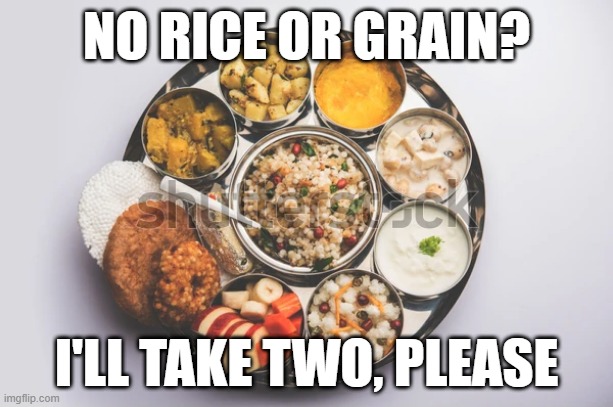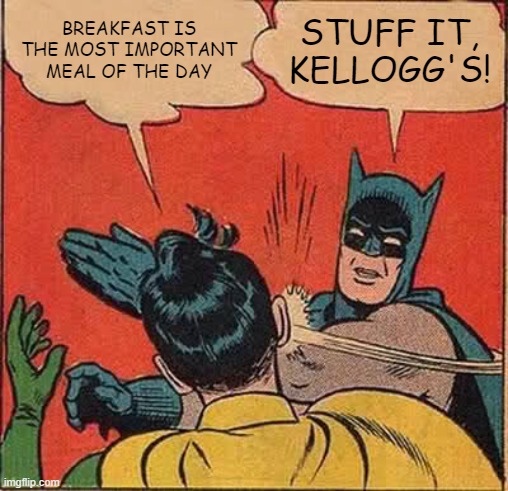-
Intermittent fasting or time restricted eating, though not a novel concept, is now definitely more commonplace. A lot of people I’ve met have tried or at least heard of it, in many cases as a weight loss tool. So here, in today’s unsolicited picks, is my journey with intermittent fasting.
Inter what?
The central tenet of intermittent fasting or time restricted eating is fairly simple: To limit the time window of eating food. This gives the body enough time to process and use your existing reserves (mainly stored fat) more efficiently by a process called ketosis.
There are different styles of practising this, depending on how long you want to make the feeding / fasting window. The important thing is you don’t change much about your diet (although as we’ll later see, you may end up doing so in a different way), and can eat practically the same things as earlier, as long as you are sticking to your time window.
What I do
Since I started formally doing it in 2017, I have been practising one of IF’s most popular formats – the 16/8. This involves 16 hours of fasting (actual no food time) followed by an eight-hour window where I can eat. So my first meal of the day, my breakfast (or lunch, depending on how you look at it) is at half past noon or 1 PM, while my last meal ends before 8.30 or 9 PM. This is similar to the dawn to dusk fast that many Muslims observe for Ramzan, except that I drink water (lots of it) and eat during the day.

“16 hours of deprivation?” Exactly.
If a 16-hour fast looks excessive, here’s another way to look at it. If you get the standard eight hours of sleep, and don’t eat anything for an hour or two before bed or after getting up, you are already fasting for about 12 hours every day. Congratulations, you are a convert, and you didn’t even know it!
Getting started
Going from 12 hours to 16 is not too difficult either. Do it gradually. Incrementally. Like all new habits. If you are used to making yourself a large tumbler of coffee or tea right when you wake up (or to wake up), consider switching to black tea or coffee (no milk or sugar). If you think only psychopaths drink black coffee, do something even better. Just postpone it. Tangential idea: the best time to have a coffee is not until later in the morning anyway (excellent explainer by I Love Coffee and The Oatmeal here).
Starting out, you may find your stomach protesting at this stage. It’s not used to being ignored. Try drinking warm water (your new best friend) to deceive the monster. If you have your first coffee or tea at 7.30 AM, move it to 8, then 8.30 and so on. At least not until you have one of the most successful mass delusions of all time: the breakfast.
The war on breakfast
What’s wrong with breakfast, I hear you asking. If you are like the millions of people who have breakfast every morning, in addition to two other meals, you will have heard and probably parroted the Kellogg’s catchphrase – “Breakfast is the most important meal of the day.”
“Has my childhood been a lie?” Yes and no.
Did you have cereal in milk for breakfast when you were young, or still do? If so, Kellogs has you right where it wants. Yes, it was the cornflakes giant that was behind the idea of popularising breakfast, for obvious reasons. As an advertising student, I am in awe of it. As a human, it’s insidious. Which is why, while we’ve been fed on that idea for a long time, it’s important to understand that its origins lie in marketing and its motives are dubious.

Your goal is to postpone breakfast until it falls into your feeding window. Remember, the longer you can leave your body in ketosis and have it use its stored energy reserves, the better. (Please note that I am not a medical professional so if you have underlying conditions or are facing issues in your IF journey, stop and speak to your doctor first.)
Optimising
The next step is to further finetune your feeding window. Once you’ve pushed out your first meal of the day, you may find yourself eating your last meal later than usual or raiding your fridge in the dead of the night. This is why you need to stick to your feeding schedule. In my case, it’s nothing before 1 PM and nothing after 9 in the night.
Even when I stick to this schedule, there are times when I find myself getting extremely hungry, usually as I wake up in the morning. This is because generally I have had high carbohydrate food the night before, like a burger from McDonald’s, loosely termed junk food or empty calories. If you are used to eating a lot of carbs, you should consider adding some good fats. For instance, mix ghee to rice, top up your toast with avocados (embrace millennialism wholly), and unprocessed cheese to pasta.
Cheating
I do not fall into the camp of people who think one day of cheating – with regards to such lifestyle habits – resets your sobriety (if fasting can even be equated to sobriety, that is). So while I am pretty consistent with my eating times during the weekdays, at other times, say on a weekend, while travelling or attending a party, I stretch my feeding window. However, this may not be the case with you. If you find yourself cheating more and more after a lapse, perhaps it would be better to stick to a stricter regimen.
Applications
No, I am not talking about using an app for intermittent fasting, although if you are doing the 5:2 format – five days of regular meals and two days of low calorie food – you might need some way to measure your calories. What I am referring to is the use of the fasting principle in other aspects of life, mainly as a way to control dopamine release aka dopamine fasting. But that will need a whole separate post.
Like I say when I look at the clock at 9 PM, “That’s been my time.” Keep coming back for more. Or take a break and do some digital fasting. Do whatever is best for you.
